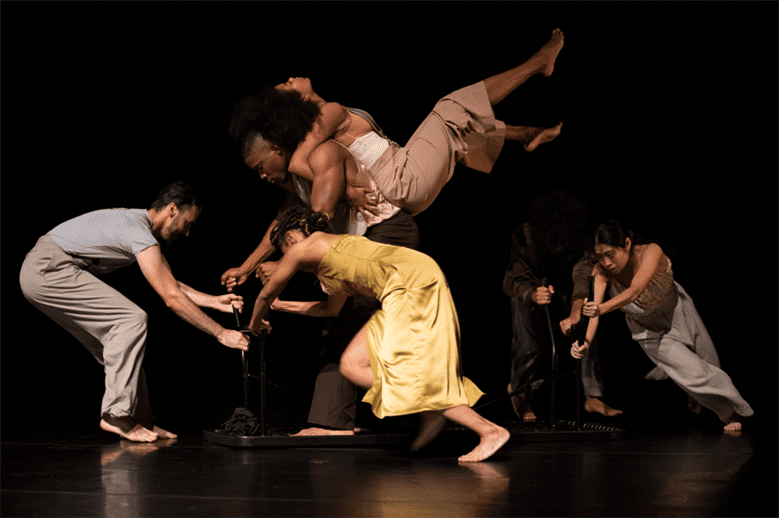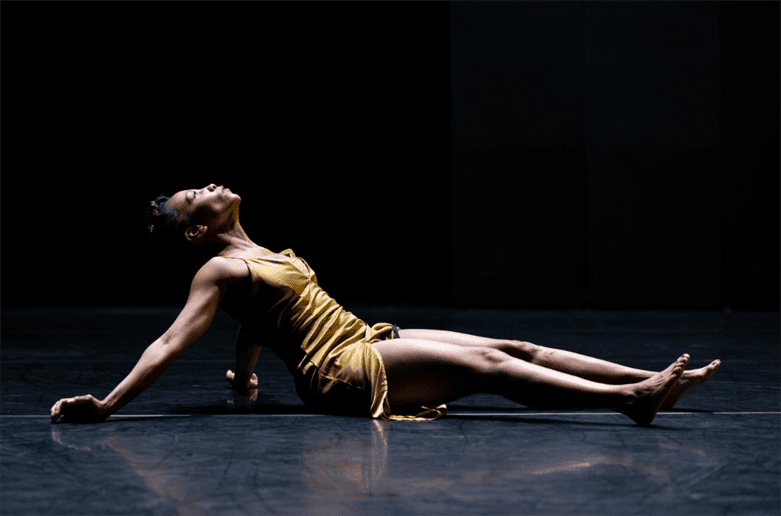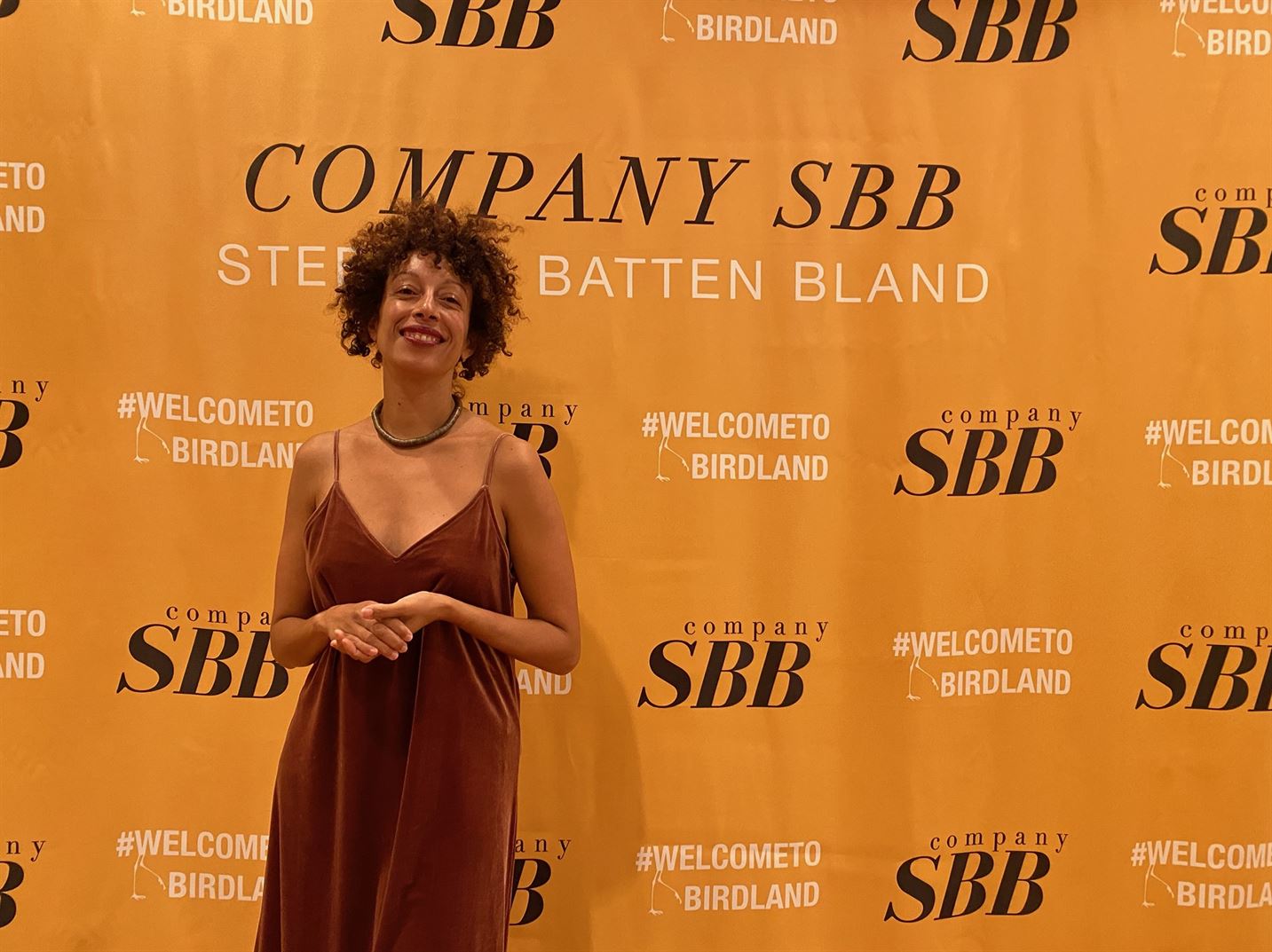“Look Who’s Coming to Dinner,” a dance-theater production that took place from Nov. 4 to Nov. 7 at Montclair State University’s Alexander Kasser Theater, with choreography, installation and direction by Stefanie Batten Bland, paid tribute to the ideas of love and acceptance presented in the 1967 film it drew inspiration from, “Guess Who’s Coming to Dinner.”
While there is no linear plot to the performance, “Look Who’s Coming to Dinner” follows similar ideas to the original film, which tells the story of an interracial couple, portrayed by Katharine Houghton and Sidney Poitier, seeking their parents’ opinion on their plans of an impromptu marriage.
Those with a stake in the decision are invited to a dinner where both sides of the betrothed not only meet one another for the first time but are forced to give a final decision on their approval of the interracial couple’s decision to marry.
“Look Who’s Coming to Dinner” proposes the same message, through the movements of seven dance artists, each portraying characters striving to achieve acceptance of who they are. The 60-minute runtime is riddled with emotion as the characters grapple with different experiences, from police brutality and racial profiling to LGBTQ+ discrimination.
Through these experiences, they remain hopeful and fight to earn a place in a society that is accepting of them, represented by a seat at the dinner table, one of the show’s only props.
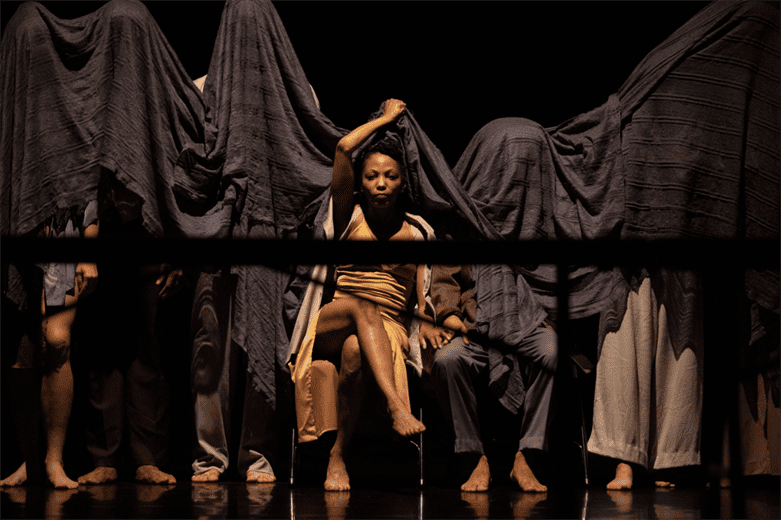
Latra A. Wilson is unveiled, while the other dance artists remain under a table cloth.
Photo courtesy of Maria Baranova
With difficult themes being explored through dance and movement, accompanied by striking music from Paul Damian Hogan, Bland aimed to challenge the destructive habit of creating boxes for people that often limit identity. She instead encourages a more open-minded attitude.
“I think we often are using those identity boxes to help, and I think we imagine them to be ways of embracing more, but they’re still boxes that we still have to break through,” Bland said. “So, we were able to take those thematics and translate it into a live format. And in particular, taking what a dinner experience is — taking that actual table and transforming that into vehicles; transforming that into doors; entryways of access.”
David Lee Parker, a collaborating dance artist in “Look Who’s Coming to Dinner,” feels the table is the main component to communicating Bland’s vision.
“I hope it would encourage the audience to think about who they sit around [with] on a day-to-day basis,” Parker said. “[Bland] brought in a really diverse cast, and I believe that was intentional. And, I think it allows us to reflect. You know, a table’s a very common thing. We gather around a table for dinner and have lunch or hang out with friends. I think she was aiming for this idea of making the audience think about who they are sitting around. ‘Why? Why Not? Is it important to you?’”
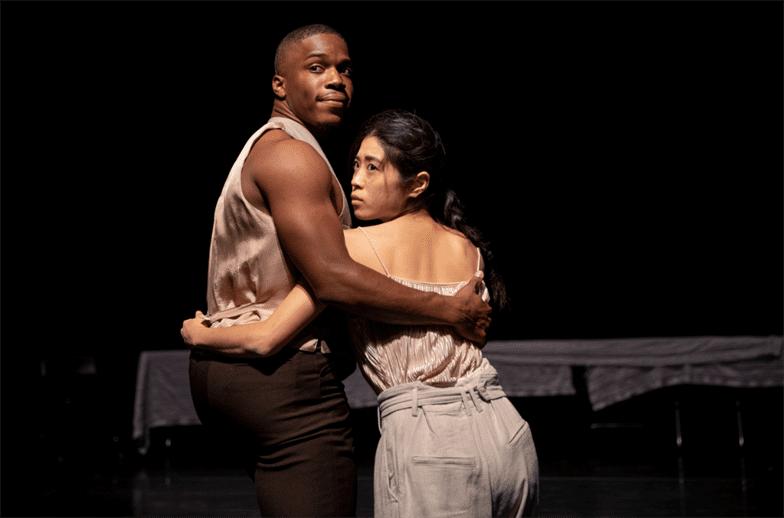
David Lee Parker and Mio Ishikawa are two of the seven dance artists in the performance.
Photo courtesy of Maria Baranova
Parker also feels much of the performance is up for the audience’s interpretation.
“But, just know that when watching a dance or interpreting art, especially with [Bland’s] work, it’s more about invoking thought and emotions, and then allowing that to make sense of the piece as a whole,” Parker said.
Manipulating simple elements of light and minimal props, “Look Who’s Coming to Dinner” leaves much room for audiences to form their own opinion as they witness a raw combination of dance, music, sound effects and most importantly, emotion.
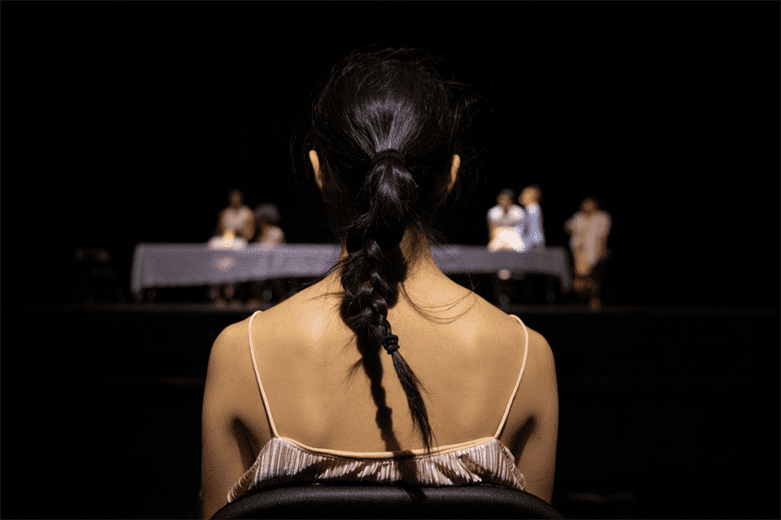
Dance artist Mio Ishikawa begins the performance sitting in a chair that faces the stage.
Photo courtesy of Maria Baranova
Nina Schrock, a senior psychology major at Montclair State, watched the original film “Guess Who’s Coming to Dinner” and enjoyed deciphering its live adaptation.
“It was such an original interpretation of the movie,” Schrock said. “I thought that it was the most creative [work] that I have ever seen in a theater.”

Nina Schrock, a senior psychology major, enjoyed deciphering the live adaptation.
Megan Lim | The Montclarion
Through the utilization of dance and theater, “Look Who’s Coming to Dinner” successfully reworks the original intent of its film counterpart, “Guess Who’s Coming to Dinner,” urging those in the audience to contemplate their relationships and views of those around them.

